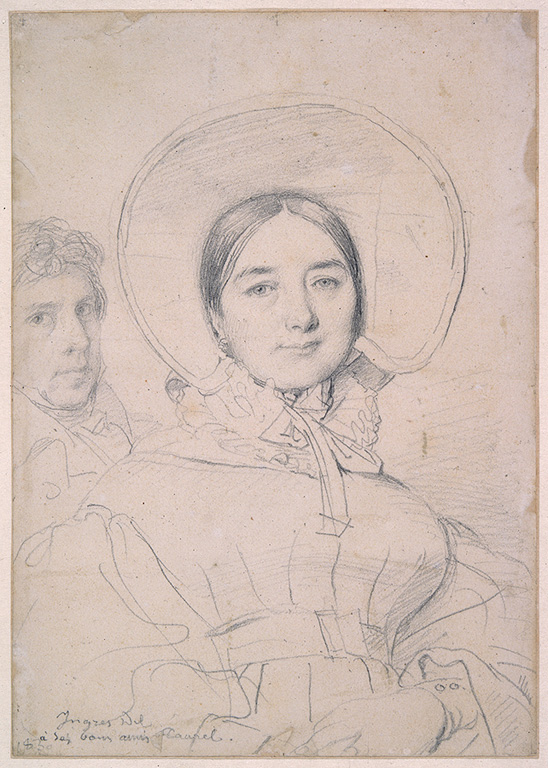Private Treasures: Four Centuries of European Master Drawings offered a selection of works from one of America’s most significant private collections of master drawings. The exhibition, on view at the National Gallery of Art, Washington, from May 6 through September 16, 2007 featured 100 of the finest drawings from the collection, and represents 85 artists of the Italian, French, Dutch, Flemish, German, Swiss, British, and Swedish schools from the 16th to the 20th centuries.
The exhibition was jointly organized by the National Gallery of Art, Washington, and the Morgan Library & Museum in New York, where it was on view from January 18 through April 8, 2007.
The Exhibition
The exhibition was presented chronologically by century, with various schools combined. About half of the exhibited drawings are by Italian artists, including

Fra Bartolommeo’s delicate The Virgin and Child Surrounded by Saints and Angels (c. 1500);

a deeply moving study of The Dead Christ by Agnolo Bronzino (1529/1535),
and three studies in colored chalks by Federico Barocci.
Two 17th-century Italian highlights were
a rich red chalk figure study by Mattia Preti titled Study for the Figure of Adrian Fortescue (1662/1666)

and Two Studies of St. Cecilia Playing the Organ by Pier Francesco Mola (1648).
Eighteenth-century highlights included
The Annunciation (1735/1740) by Giovanni Battista Tiepolo;
Marta Gandolfi (1778), a tender portrait of Gaetano Gandolfi’s daughter;
and a Lagoon Capriccio with a Fortified Tower (1780s) by Francesco Guardi.
About one-quarter of the show consisted of French drawings, with artists ranging from Etienne Delaune and Claude Lorrain to Edgar Degas and Odilon Redon.
Eighteenth-century highlights included

The Drawing Lesson (1777)
and The Gardens of the Villa Negroni (1773), two of the greatest drawings by François-André Vincent;

A Man Playing a Guitar (1717/1718), a brilliant trois-crayons (three chalks) work by Antoine Watteau;
and three outstanding works by Jean-Honoré Fragonard,

The Little Park (1765),

Two Cypresses in an Italian Garden (1774),
and The Bread Box (1777).
Nineteenth-century works included

Cliffs at Fécamp (1835/1839), a vibrant watercolor by Eugène Delacroix,

and Madeleine Ingres with the Artist (1830), a double portrait of Jean-Auguste-Dominique Ingres and his wife.
Among those works representing Dutch and Flemish art were a wonderfully calligraphic sketch by Ferdinand Bol and The Wijde Kapelsteeg in Amsterdam with the Burgerweeshuis in the Distance (1793), a beautifully detailed view of a street in Amsterdam by Jacob Cats.
The British drawings section began with a rare work by the l7th-century artist Francis Place, Ruins of Old St. Paul’s Cathedral (1670/1672), and featured landscapes, including Wooded Landscape with a Stream (mid-1780s) by Thomas Gainsborough and

Figures Entering an Extensive Valley (1820) by John Martin.
Among work by German artists rounding out the selection was a small but magical 19th-century landscape by Caspar David Friedrich,

Moonlit Landscape with Lovers and a Church (1797/1798);
a mesmerizing study of a woman by Wilhelm Leibl, Young Peasant Woman (1889); and two silvery graphite drawings by Adolf Menzel,

Seated Man Leaning Forward (1887)

and A Couple Looking at a Painting (1893). German 20th-century drawings included powerful portrait studies by Käthe Kollwitz and Lovis Corinth.
Curators and Related Activities
The exhibition curators were Margaret Morgan Grasselli and Andrew Robison at the National Gallery and Rhoda Eitel-Porter and Jennifer Tonkovich at the Morgan Library & Museum.

The exhibition catalogue, edited and designed by the National Gallery of Art, is fully illustrated and jointly written by National Gallery and Morgan Library & Museum curators. Published by Lund Humphries, the 248-page book features 153 color and 10 black-and-white illustrations, and provides an opportunity for collectors, scholars, and general readers to enjoy major works that are seldom reproduced. The catalogue contains new scholarship on each drawing, and the sumptuous layout shows all the works in full color.